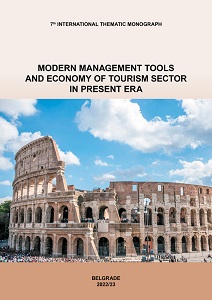Testing the Purchasing Power Parity Hypothesis with Tourism Price Indices for OECD Countries
Testing the Purchasing Power Parity Hypothesis with Tourism Price Indices for OECD Countries
Author(s): Jani Beko, Darja Boršič
Subject(s): Economy, Tourism
Published by: Udruženje ekonomista i menadžera Balkana
Keywords: Panel unit root tests; Tourism sector; Consumer price indices for hotels and restaurants; Price competitiveness
Summary/Abstract: This chapter investigates the empirical validity of PPP for the group of 26 OECD economies. Four improvements are derived from the research. First, the testing strategy relies on two price indicators: the consumer price index for all items and the consumer price index for hotels and restaurants including catering and accommodation services. Second, the PPP theory is scrutinized by employing two base currencies; the US dollar and the euro. Third, the mean reversion hypothesis of OECD countries’ real exchange rates is evaluated by a variety of first-generation panel unit root tests plus by the Pesaran CIPS unit root test integrating potential correlations across residuals of panel units. Fourth, the PPP model is inspected on a new data set covering the period from February 2002 to October 2022. The results reveal robust evidence of mean reversion of real exchange rates in the panel of OECD countries.
Book: ITM 7 - Modern Management Tools and Economy of Tourism Sector in present Era - 7th ISSUE
- Page Range: 21-49
- Page Count: 30
- Publication Year: 2022
- Language: English
- Content File-PDF

